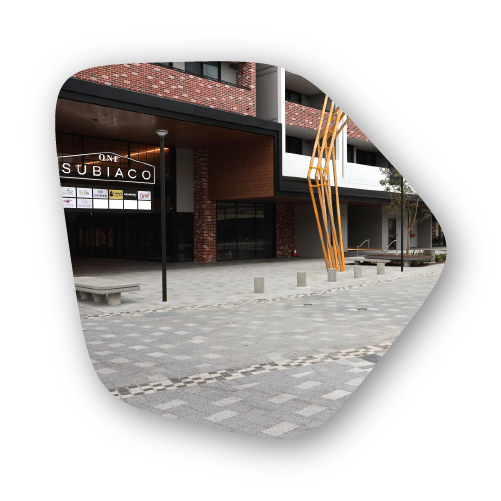
How To Clean Your Pavers
Helpful guidelines to follow when it comes to cleaning your pavers
You’ve just laid some beautiful pavers, and they look amazing! How do you keep them that way? Here, we’ll explain everything you need to know to keep your pavers looking like new year-round. Let’s get started!
Prepare the area
Before you attempt to clean your pavers, you’ll need to prepare the area first. This involves moving removable items that are sitting on them such as pot plants, vehicles etc. Once you have done this, you’ll need to protect any plants, grass or items that may be susceptible to damage if they were exposed to cleaning products with plastic sheeting. While it is difficult to prevent overspill from getting on to your grass, you can minimise the amount that reaches it with the help of another person. While one person is applying the cleaning product and scrubbing, the other can soak up any excess with an old mop as they go.
Clean the area with water
Depending on how dirty your pavers are, you may be able to lift loose dirt and debris with a garden hose only. If this doesn’t work, you may have better luck with a pressure cleaner. Pressure cleaners are fantastic for removing heavy and stubborn stains, however, use them with caution as they can be extremely powerful. If you have the pressure on too strong, it can disrupt the sand and damage your pavers. If your pavers come up well using a hose or pressure cleaner, that’s all you need to it regards to cleaning, there is no need to use cleaning products.
Using a cleaner
You should only use a cleaner when you cannot remove stains and marks with a hose or pressure cleaner alone. Make sure the cleaner you use is suitable for use on your paving material to prevent unnecessary wear or damage. If you cannot find a cleaner that is designed for use on your pavers, or you simply want to save money, you can make your own using dishwashing liquid and water. Apply liberally to your pavers and using a stiff brush or broom, scrub the area. If this fails to remove all the gunk, try leaving the liquid on to soak for 5 to 10 minutes and then scrub again. Mop up the excess to prevent damage to your grass, and then rinse off with a hose or pressure cleaner.
Replace sand if needed
If there are gaps that need refilling with sand, wait until the pavers have dried then distribute a bag of sand over the pavers. Brush the sand over the pavers to fill any gaps. This will have your pavers looking like a million bucks again, not only that, but it also ensures that they remain sturdy and safe to walk on.
Re-sealing your pavers
It is recommended you re-seal your pavers every 1 to 2 years to protect them and extend their longevity. Always make sure you are using a product that is made for use on your type of paver. The application process can vary slightly, so it’s always recommended you follow the instructions outlined on the product.
What about hard to shift marks and stains?
Organic matter
Organic matter is the number one culprit when it comes to marking your pavers, and it’s not uncommon to see moss, algae and slime forming on them especially in areas with a lot of rain. You can get rid of it and prevent it from coming back by following these simple steps. Wet down your pavers and soak the lawn surrounding. Add one part of pool chlorine to 10 parts water in a bucket. Apply to your pavers and scrub with a stiff broom, focusing on high growth areas. Leave the solution on the pavers for 20 minutes. If you can, remove excess chlorine and water mix using an old mop. Soak your surrounding lawn/garden again and rinse off the remaining chlorine mix. It may take more than one attempt to remove all organic matter, if this is the case, repeat as necessary. Wait until it’s a day with full sun to do this, as chlorine degenerates from UV rays and you’ll need this to occur to prevent it from damaging your surrounding lawn or garden.
Oil stains
If your pavers have a new oil or grease stain, try to remove the excess by dabbing with a paper towel. Make sure you don’t rub it as this can make it more difficult to get rid of. Dishwashing liquid should be applied directly to the stain and left for around 30 minutes. After 30 minutes, scrub the area using a stiff brush. Once removed, rinse with hot water.
Tyre skids
Apply a small amount of degreaser to the area and use a stiff brush to remove. Rinse with water until the area is clean.
Remember
Always follow the maintenance and cleaning guidelines that the paving provider has given you to get the best results every time. If you are using a strong product, make sure you protect yourself by wearing sufficient PPE and use it with caution. Never wash off hazardous products with a pressure cleaner as it can spread the chemical on the areas surrounding it.
If you haven’t paved yet, but you want to or need some advice on paving for your home, get in touch with our friendly team here at Bonita Stone, where paving professionals would love to help if we can.






